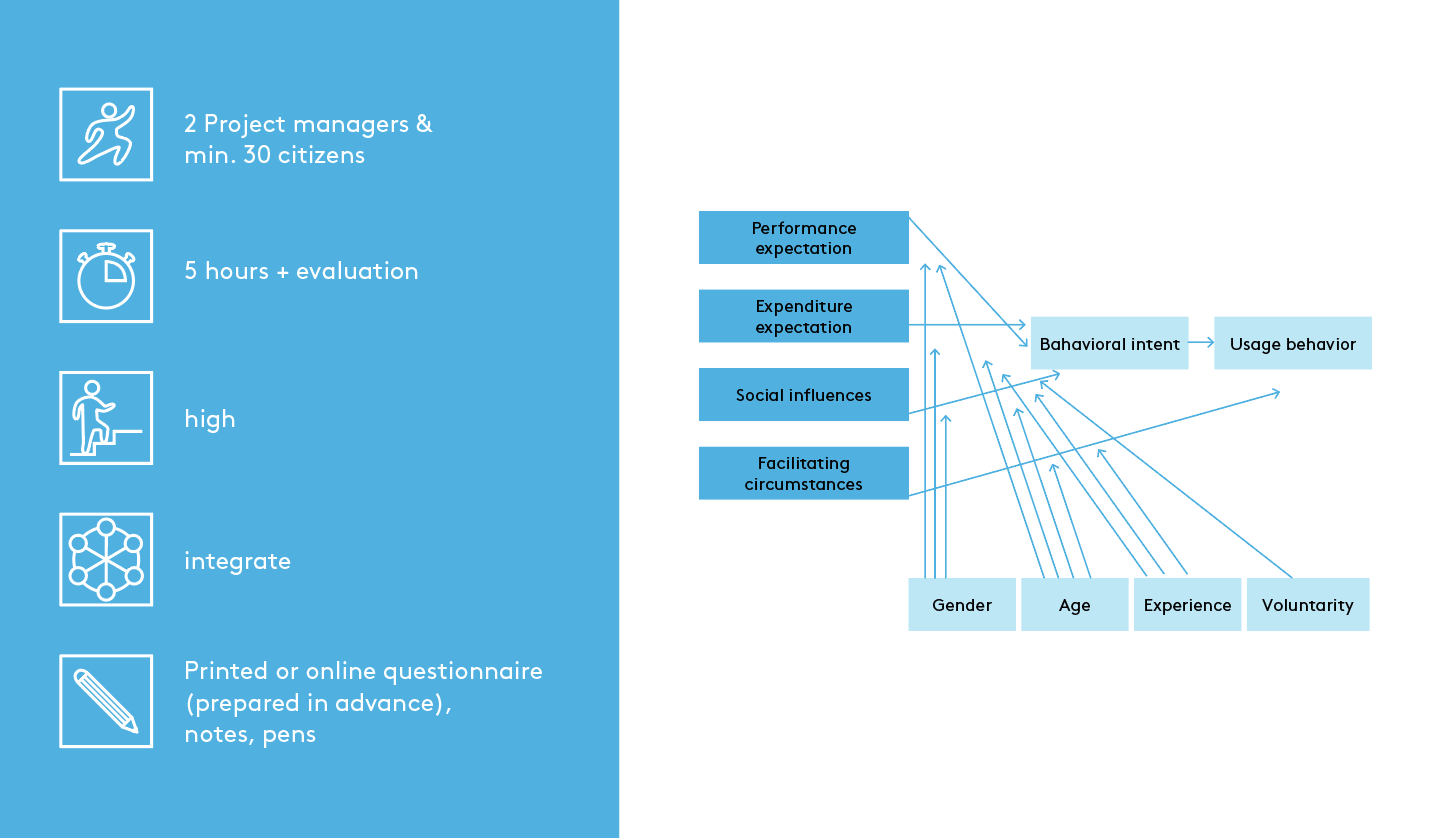
Step-by-Step
1. In preparation for the evaluation, create an online or printed questionnaire that measures the degree to which the innovation is influenced by four factors: performance expectancy, effort expectancy, social influences, and facilitating circumstances.
a. Performance expectancy (usefulness, extrinsic motivation): Does the innovation help the respondent improve his/her performance?
b. Effort expectancy (perceived ease of use, complexity): Is the technology easy to use? Can the respondent use the innovation without difficulty?
c. Social influences (subjective norm, social factors, image): Could other people think that it is good to use this innovation? What does the environment of the subject think about the use?
d. Facilitating circumstances (facilitating conditions, compatibility): Can existing technical and organizational infrastructures support the innovation and influence its use? What influence does the existing infrastructure have on the innovation?
More about the tool
Testimonial



